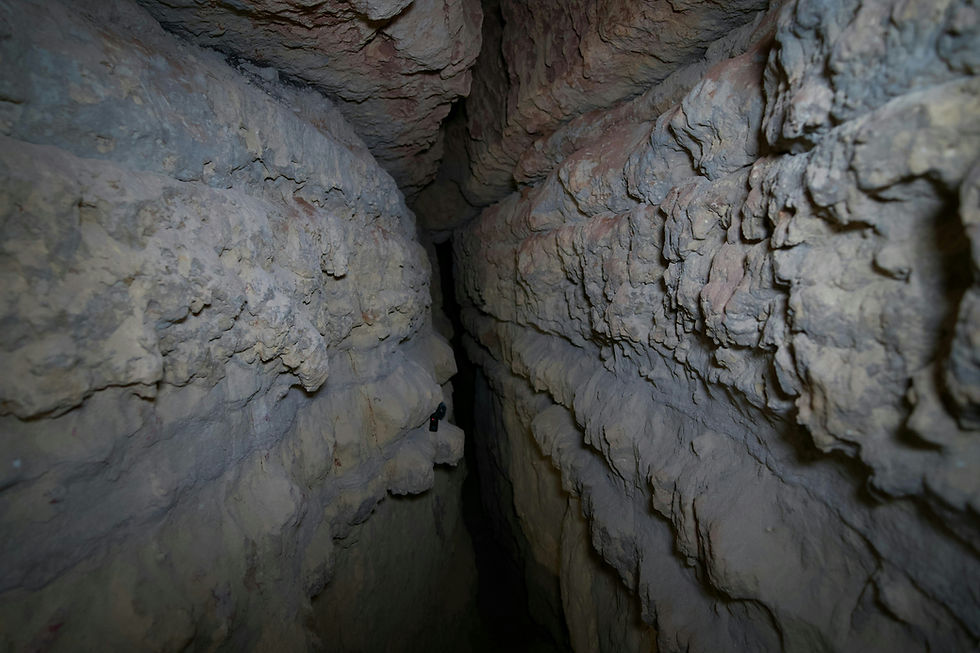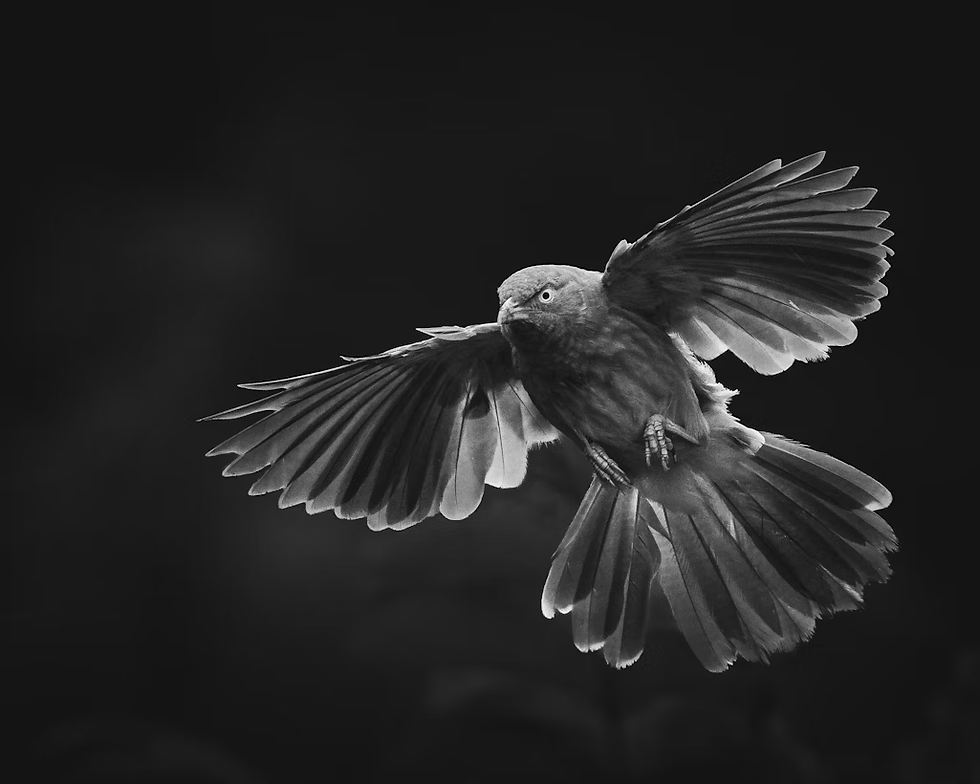The Origins of Claustrophobia: Understanding the Fear of Enclosed Spaces
- Emma Calden
- Jul 31
- 7 min read

Claustrophobia, the intense fear of enclosed or confined spaces, is one of the most common and debilitating phobias. Individuals suffering from claustrophobia often experience overwhelming anxiety when faced with situations like being in an elevator, entering a small room, or even sitting in a crowded place where movement is restricted. For many, this fear is triggered by the sense of being trapped or unable to escape, leading to feelings of panic, rapid breathing, sweating, and sometimes even fainting.
But what causes this fear? Is claustrophobia an innate instinct, a learned response, or a combination of both? To fully understand the origins of claustrophobia, we must explore its psychological, evolutionary, and cultural roots. In this article, we will examine how our brains and bodies process fear, the impact of past experiences, and the role of societal influences in shaping the phobia.
Take our claustrophobia test here!
The Evolutionary Roots of Claustrophobia
To understand why humans are so deeply affected by claustrophobia, it is useful to look at evolutionary psychology. Evolutionary psychology suggests that many of our fears, phobias, and behaviors are deeply rooted in the survival instincts that have been passed down through generations.
Throughout human history, survival was often a matter of avoiding potential threats, and our ancestors needed to be constantly aware of their surroundings. Early humans lived in environments where physical dangers were ever-present, from predators to natural disasters. One of the key ways to survive was to have an acute sense of awareness about one's environment. Being trapped in a small, confined space could present serious threats in the past, such as the risk of being attacked by a predator or being unable to escape in the event of a natural disaster like a fire or flood.
In these early environments, being trapped in a confined space would have been a potentially life-threatening situation. The fear of being unable to escape from such spaces could have been a significant survival trait. This fear would have prompted our ancestors to avoid small, enclosed areas where they might feel vulnerable, increasing their chances of survival. Over time, this instinct to avoid confinement was likely passed down to future generations, becoming an ingrained response.
From an evolutionary standpoint, claustrophobia may have been a way for early humans to safeguard their survival by instinctively avoiding tight, enclosed spaces. This type of fear would have been adaptive because it helped individuals avoid dangerous situations where they could not easily escape. Though many modern situations no longer present life-threatening dangers, our brains are still wired to react as if they do.
The Psychological Development of Claustrophobia
While evolutionary instincts may have laid the groundwork for claustrophobia, personal experiences also play a significant role in the development of the fear. Psychological theories often suggest that phobias develop through a combination of classical conditioning and observational learning.
Classical Conditioning and Traumatic Events
One of the primary ways phobias develop is through classical conditioning, a form of learning in which an individual associates an object, situation, or environment with fear or anxiety. In the case of claustrophobia, a person may have experienced a traumatic event in a confined space, such as being trapped in a small room, locked in a closet, or stuck in an elevator.
For instance, imagine a child who is accidentally locked in a small room for a period of time. The distress experienced during that moment could create a powerful association between enclosed spaces and fear. This learned response could persist into adulthood, where even entering a confined space like a crowded elevator or an airplane cabin may trigger the same fear and anxiety experienced during that childhood event.
Observational Learning and Parental Influence
Claustrophobia can also be learned through observational learning, where an individual develops a fear by observing others. For example, a child who witnesses a parent or caregiver experience panic or anxiety in enclosed spaces may come to associate those spaces with danger. If the parent reacts with fear in an elevator, for example, the child may learn to mimic that response, even if they have not had a negative experience themselves.
Children are particularly impressionable when it comes to fear-based learning. This means that if a parent frequently expresses fear or anxiety in small spaces, the child may internalize this fear as part of their own response to similar situations. This pattern of behavior can persist into adulthood, even if the original trauma or fear is no longer consciously remembered.
Cognitive Factors and Negative Thought Patterns
In addition to classical and observational conditioning, cognitive factors also contribute to the development and maintenance of claustrophobia. Cognitive-behavioral theories suggest that individuals with claustrophobia may have a distorted or exaggerated perception of the danger posed by confined spaces. These individuals may have negative beliefs about being trapped, such as thinking they will not be able to breathe, escape, or that something terrible will happen if they are enclosed in a small space.
These thoughts can lead to anticipatory anxiety, where the individual begins to fear situations before they even occur. For example, someone with claustrophobia might begin to feel anxious before entering an elevator because they worry about being stuck or unable to breathe. These negative thoughts can fuel the cycle of fear, making the individual more likely to avoid enclosed spaces altogether.
Cultural and Societal Influences on Claustrophobia
Cultural factors also play a significant role in the development and intensity of claustrophobia. In societies where personal space and freedom are highly valued, individuals may be more likely to develop a fear of being confined or restricted. The concept of personal space varies widely between cultures. In some cultures, being in close proximity to others is considered normal and acceptable, while in others, personal space is highly valued, and the idea of being physically restricted or enclosed is seen as highly discomforting.
Western societies, in particular, place a strong emphasis on individualism and autonomy. This cultural emphasis on personal freedom and control may contribute to a heightened sensitivity to situations that make individuals feel trapped or restricted. For example, in a society that encourages personal independence, a lack of control in an enclosed space may trigger feelings of anxiety, leading to claustrophobia.
Moreover, the way claustrophobia is portrayed in the media can reinforce cultural attitudes about the fear. Movies, books, and television often depict claustrophobia as a common fear, especially in high-stress situations. Characters are frequently shown experiencing panic attacks in small spaces, which may shape viewers' perceptions of claustrophobia. This portrayal can make individuals more aware of the fear and, in some cases, can even amplify their own anxieties.
Modern-Day Impacts of Claustrophobia
Claustrophobia can manifest in a variety of ways in modern life. People who suffer from the phobia may avoid situations like riding in elevators, visiting crowded places, or traveling on airplanes. The fear of being trapped in an enclosed space can significantly limit an individual’s mobility and sense of freedom, affecting work, relationships, and overall quality of life.
The presence of claustrophobia in certain environments, such as airplanes or hospital MRI machines, is particularly problematic. These modern-day experiences require individuals to be in tight, confined spaces for extended periods, which can lead to severe anxiety or panic attacks. For individuals with claustrophobia, the anticipation of being in these situations can also create stress and avoidance behaviors.
In extreme cases, the fear of small spaces can cause individuals to withdraw from social activities, isolate themselves, and avoid necessary medical procedures. As a result, people with claustrophobia may face social and psychological difficulties that extend far beyond the confines of the phobia itself.
Treatment and Management of Claustrophobia
Fortunately, claustrophobia is treatable, and several therapies are available to help individuals manage and overcome their fear of enclosed spaces. Cognitive-behavioral therapy (CBT) is one of the most effective forms of treatment for phobias, including claustrophobia. CBT focuses on identifying and challenging negative thought patterns that contribute to the fear. By gradually exposing individuals to situations that trigger their anxiety in a controlled and safe environment, CBT can help them desensitize to the feared situation and develop healthier coping strategies.
Exposure therapy, a type of CBT, is particularly effective for claustrophobia. This therapy involves gradual exposure to confined spaces, starting with less threatening situations and slowly progressing to more anxiety-provoking scenarios. For example, an individual might first practice standing in a small room for a few minutes and then gradually increase the time spent in more confined spaces, such as an elevator or airplane cabin.
Relaxation techniques, such as deep breathing exercises, meditation, and mindfulness, can also help individuals manage their anxiety during exposure to enclosed spaces. These techniques help individuals stay calm and grounded, reducing the physiological symptoms of fear.
In some cases, medication may be prescribed to help individuals manage anxiety or panic attacks related to claustrophobia. Medications such as antidepressants or anti-anxiety drugs may be used to reduce the severity of symptoms, but they are typically used in combination with therapy for long-term success.
Conclusion: The Origins of Claustrophobia
Claustrophobia is a complex phobia with deep roots in both evolutionary psychology and learned behaviors. While the fear of confined spaces may have initially been an adaptive survival mechanism, it has become a persistent and sometimes debilitating fear in the modern world. The development of claustrophobia is influenced by a variety of factors, including personal experiences, societal attitudes, and cognitive distortions. However, with proper treatment, including cognitive-behavioral therapy, exposure therapy, and relaxation techniques, individuals can manage and overcome their fear of confined spaces.
Understanding the origins of claustrophobia is an essential step in addressing the phobia. By acknowledging the psychological, cultural, and evolutionary factors that contribute to this fear, individuals can take meaningful steps toward regaining control over their lives and breaking free from the constraints of their fear. Through therapy, support, and perseverance, claustrophobia can be conquered, allowing individuals to navigate the world with greater confidence and freedom.
.png)










































